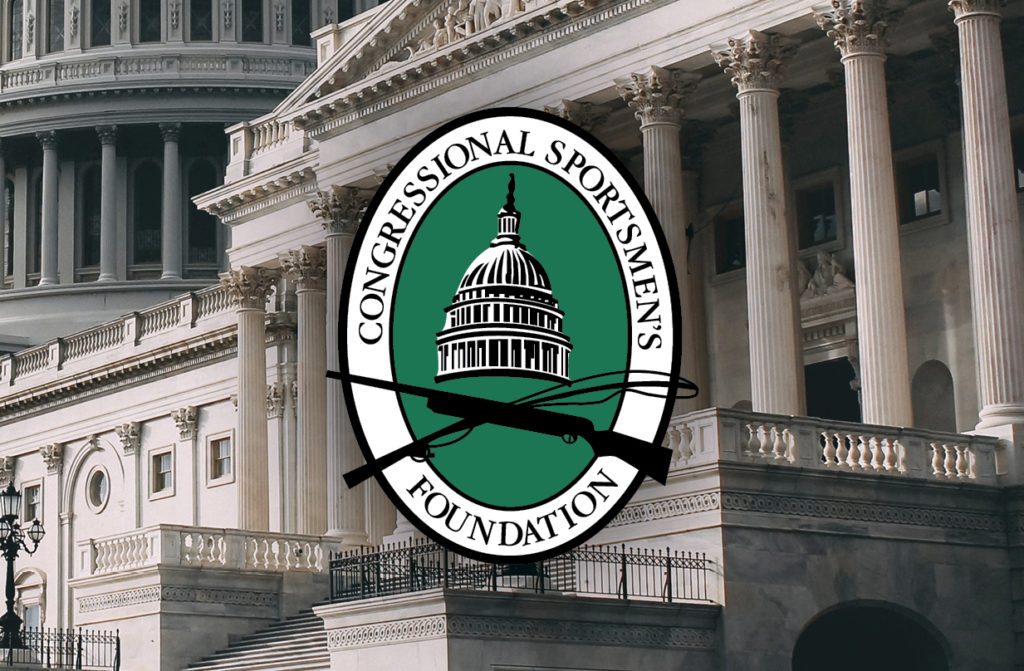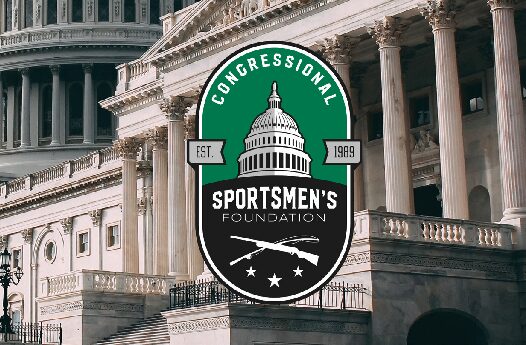Policy Corner Brief: September 2020

Department of the Interior Announces Historic Opening of 2.3 Million acres to Hunting and Fishing
In August, the Department of the Interior announced a final rule to increase public access opportunities for sportsmen and women across more than 2.3 million acres, marking the largest opening and expansion of hunting and fishing opportunities on federal refuges and hatcheries in the history of the U.S. Fish and Wildlife Service.
Specifically, this expansion will provide over 850 new hunting and fishing opportunities at 147 national wildlife refuges and national fish hatcheries spanning more than 2.3 million acres. This expansion builds off a similar rule in September of 2019 that expanded hunting and fishing opportunities on more than 1.4 million acres across the nation. In total, the Department of the Interior has increased access opportunities on nearly 4 million acres of public land over the last year.
“By providing new access to 2.3 million acres of refuge and hatchery lands and waters, this final rule, coupled with the expansion in 2019, demonstrates Secretary Bernhardt’s clear commitment to America’s sportsmen and women,” said Congressional Sportsmen’s Foundation President Jeff Crane. “Sportsmen and women are grateful for the Secretary’s steadfast leadership to increase public access opportunities for our nation’s sportsmen and women.”
The Congressional Sportsmen’s Foundation continues to work closely with the Department of the Interior to seek new ways to increase access for hunters, anglers, trappers, and recreational shooters.
AB 3030 Shelved for 2020 in California
The sportsmen’s community is celebrating last week’s decision by the California Senate Appropriations Committee to hold Assembly Bill (AB) 3030 for the remainder of session. AB 3030 posed a serious threat to access for hunting, fishing and outdoor recreation.
AB 3030 aimed to protect 30 percent of California’s lands and waters by 2030 without clearly stating what it meant by “protect,” what areas were already considered protected in the state, and how the bill would protect additional lands and waters. The unwillingness of the environmental sponsors of the bill to clearly identify hunting and angling as compatible uses in conservation zones was problematic and ultimately forced the recreational community to oppose the bill. The ambiguity around “protection” in AB 3030 drew sweeping opposition from a variety of sectors including real estate, agriculture, forestry, local government, and water districts, outdoor industries and hundreds of individuals, to name a few.
The AB 3030 effort was truly a collective sportsmen’s community win. The diversity and breadth of the sportsmen’s coalition that fought for hunters’ and anglers’ rights was impressive and encouraging to see many partners band together to ensure bad sportsmen’s policy did not have the opportunity to be enacted again in California.
Protecting 30 percent of lands and waters is a global initiative known as “30×30,” and it is being discussed at the national and state level in America. The sportsmen’s community intends to continue our conversations with proponents of 30×30 to ensure safeguards for hunting and fishing as a sustainable use of our public natural resources for outdoor recreation in California and everywhere else this policy is contemplated.
Hunters and anglers are America’s original conservationists who contribute hundreds of millions of dollars to land and water conservation and education programs each year, and have repeatedly supported, if not advocated, implementing necessary restrictions to conserve our treasured natural resources.
The United States is a global leader in conservation, thanks in large part to the sportsmen’s community, and no one is better equipped to manage our natural resources than our state fish and wildlife agencies. We can continue leading the globe in ensuring professional natural resource management while also ensuring hunting, fishing and outdoor recreation will be available to all for generations to come.
Pro-Sportsmen’s Bills Championed by Caucus Members are Signed into Law in New York
On August 24, 2020, two pro-sportsmen’s bills led by members of the bipartisan and bicameral New York Legislative Sportsmen’s Caucus were signed into law. One important bill allows for the firearms instruction of youth under the age of 16-years-old by certified 4-H instructors, and the other expands the use of rifles for hunting big game within Tompkins County.
Assembly Bill 8078 addressed the firearms instruction of youth by certified 4-H Shooting Sports instructors, and was carried by Assembly Member Carrie Woener, who is an active member of the Caucus and a regular attendee at Caucus events. The bill enjoyed strong bipartisan support throughout the legislative process. On the bill passage, Assembly Member Woener stated, “I am pleased to announce that my bill to permit 4-H Certified Shooting Instructors to instruct young people at shooting ranges has been signed into law. This bill will increase the number of qualified shooting instructors in the state and clarify the state’s certification requirements.”
Another key bill signed into law on the 24th was Assembly Bill 8666 (AB 8666), sponsored by Assembly Member Barbara Lifton, another active member of the Caucus. AB 8666 and its Senate companion (SB 8522, sponsored by Caucus Member Senator Pamela Helming) likewise enjoyed strong bipartisan support and as a result of their enactment, hunters in Tompkins County will soon be authorized to use rifles for hunting big game.
The Congressional Sportsmen’s Foundation commends the work of all of the members of the New York Legislative Sportsmen’s Caucus who were involved in these efforts.
CSF and Partners Urge DOI and USDA to Provide $55 Million for Recreational Access
Last week, the Congressional Sportsmen’s Foundation (CSF) and nearly 30 of the nation’s leading sporting-conservation groups sent a letter to Secretary of the Interior David Bernhardt and Secretary of Agriculture Sonny Perdue urging the allocation of at least $55 million to enhance access for sportsmen and women.
Specifically, the letter calls for the allocation of at least $55 million for Fiscal Year 2021 Great American Outdoors Act funding to be provided to the “recreational access” programs within the Bureau of Land Management (BLM), the U.S. Fish and Wildlife (USFWS), the National Park Service (NPS), and the U.S. Forest Service (USFS). In August, the Great American Outdoors Act was signed into law which provides $9.5 billion in funding to restore the infrastructure on our nation’s treasured public lands including the BLM, USFWS, NPS, and USFS, which support more than 25 million hunting days and nearly 45 million fishing days annually. Currently, there are nearly 10 million acres of federally managed public land that sportsmen and women are currently unable to legally access. However, this problem can be addressed, in part, by providing sufficient funding to the “recreational access” programs within the Departments of the Interior and Agriculture.
CSF continues to work with the Departments of the Interior and Agriculture to implement the Great American Outdoors Act in a manner that will provide significant benefits to sportsmen and women.
Pheasant Season Outlook Looking Good Throughout Parts of the Midwest
Upland bird hunters in parts of the Midwest are looking forward to what is predicted to be a great pheasant hunting season in 2020. Recent population survey data released in Iowa, Minnesota, and North Dakota suggest that pheasant populations are on the rise throughout much of the region. Though many of the usual annual bird population surveys performed by state fish and wildlife management agencies were impacted by the COVID-19 pandemic, these reports represent good news for hunters.
Thanks to a combination of a mild winter that tends to increase hen survival and a cool, dryer than normal spring that can improve in nesting success, biologists expect increased summer counts to translate to more pheasants in the fall. Compared to last year’s wet spring nesting season, this is great news for one of the most sought-after upland species in the country. With these weather conditions remaining relatively consistent throughout much of the Midwest, hunters should remain optimistic about their chances for a successful hunt heading into the 2020 season.
Upland bird hunting is a great opportunity to spend time with friends and family while participating in an activity that inherently incorporates social distancing. Midwestern hunters are encouraged to take advantage of the many great opportunities to practice #ResponsibleRecreation while introducing a new hunter to the field. As opening day of pheasant season draws closer, hunters are encouraged to contact their desired state’s fish and wildlife management agency for specific details on the areas in which they plan to hunt.
Senate Passes Robust Conservation Package Known as the ACE Act
Last week, the Senate passed S. 3051, the America’s Conservation Enhancement (ACE) Act, marking the second time the Senate has passed this robust conservation package on unanimous consent, demonstrating their strong support for sportsmen and women.
The ACE Act first passed the Senate in early January in the form of H.R. 925, but the ACE Act had to be passed by the Senate a second time due to legislative negotiations that occurred when the ACE Act was received in the House. The Congressional Sportsmen’s Foundation continues to remain heavily engaged on advancing the ACE Act and is working to shepherd this strongly supported legislation through the House. The ACE Act consists of nearly a dozen provisions that will increase access for sportsmen and women and authorize critical funding for fish and wildlife habitat. The ACE Act will:
- Reauthorize the North American Wetlands Conservation Act (NAWCA) at $60 million annually for a period of 5 years;
- Prohibit the EPA from regulating the use of lead fishing tackle for a period of 5 years;
- Establishes a task force within the USFWS to combat Chronic Wasting Disease;
- Congressionally authorizes the National Fish Habitat Partnership at $7.2 million annually for a period of 5 years;
- Reauthorization of the Chesapeake Bay Program starting at $90 million and increasing to $92 million over a 5-year period;
- Among others
The Congressional Sportsmen’s Foundation will work with the House members of the Congressional Sportsmen’s Caucus to advance the ACE Act that was passed out of the Senate. The bill now awaits to be scheduled for a vote in the House.
South Carolina Apprentice Hunting License Legislation Passes Senate
On September 17, legislation that would expand the apprentice hunting license program passed the South Carolina Senate. This legislation previously passed the House on April 3, 2019 and will advance to the Governor’s desk once ratified.
Sponsored by South Carolina Legislative Sportsmen’s Caucus (Caucus) Member Representative Bobby Cox, House Bill 3800 would remove the limitation on the number of apprentice licenses that a person may purchase. Individuals are currently prohibited from purchasing more than one apprentice license. Apprentice licenses support hunter recruitment efforts by providing novice hunters with an opportunity to hunt on a “try-before-you-buy” basis under the supervision of an experienced and licensed hunter.
Leading up to the special session this week, the Congressional Sportsmen’s Foundation (CSF) worked with the Caucus and Families Afield partners to encourage the Senate Fish, Game and Forestry Committee to schedule a hearing. Subsequently, CSF submitted a letter of support for the expansion of the apprentice hunting license program.
The letter stated, “As is often the case with trying new experiences, new hunters successfully transition to being a fully licensed hunter with more time and experience in the field. By removing the current one-year limitation on apprentice hunting licenses, we would submit that more South Carolinians would ultimately become fully licensed hunters.” The letter also stressed the importance of recruiting new hunters to conservation funding and the state’s economy.
Prior to the legislature gaveling in, the bill was recalled and placed on the Senate calendar. The bill then passed the Senate on a 41-0 vote.
CSF would like to extend our gratitude to Senator Chip Campsen, Representative Bobby Cox and other members of the Caucus for their work advancing this important legislation.
Proposed Rule Change Aims to Reduce Mentored-Youth Hunting Program Age Requirement in New Mexico
On Friday, October 16, the New Mexico State Game Commission will be hosting a virtual meeting and rule hearing on a number of proposed changes to the Hunter Education rule.
The newly proposed rule includes changes to reduce the minimum age to participate in the Mentored-Youth Hunting Program from 10 to 8 years of age, and add pronghorn to allowable species Mentored-Youth may hunt. As it stands, Mentored-Youth hunters are limited to pursuing small-game, turkey, deer and javelina. Additionally, the proposed changes would require a mentor to possess either a hunter education certification number or a mentor certification number of an abbreviated hunter training course and current registration in the New Mexico Department of Game and Fish’s (NMDGF) mentored-youth program.
The Mentored-Youth Hunting Program is just one example of how NMDGF it actively working to increase hunter recruitment, retention and reactivation (R3). Similar to apprentice hunting licenses offered around the country, the program allows novice hunters the opportunity to hunt under the supervision of a licensed hunter before they have completed their hunter education course.
In the United States, participation in hunting has been generally declining since the 1980’s. Hunting license sales provide essential funding for wildlife conservation and habitat restoration, while hunter expenditures generate billions of dollars annually for the national economy and support hundreds of thousands of jobs. In response to the declining number of sportsmen, state fish and wildlife agencies, conservation organizations, shooting sports organizations, and the hunting/shooting sports industry have invested heavily in R3 initiatives.
By reducing the Mentored-Youth hunter age and increasing the applicable species in New Mexico, children are being recruited into hunting at an earlier age, increasing the probability of retaining them as active participants into adulthood and increasing the opportunity and diversity of species they are ultimately able to harvest.
Interested persons may submit comments on the proposed changes to the Hunter Education rule at lance.cherry@state.nm.us or submit written comments to NMDGF at 1 Wildlife Way, Santa Fe, New Mexico 87507. All comments are due by 8:00 a.m. on October 15, 2020.
SHARE ON
You may also like
The role corn plays for gamebirds and economies ac...
Sportsmen’s conservation policy issues from publ...
Sportsmen’s conservation policy issues from publ...


























